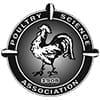Explore all the information on
Avian influenza
Avian influenza is a viral infection found in domestic poultry and a wide range of other birds. Wild waterfowl and shorebirds are often subclinically affected carriers of the virus. In poultry, low-pathogenicity strains can cause subclinical infections; however, some strains typically cause respiratory signs or decreased egg production. Highly pathogenic strains may cause widespread organ failure and sudden death, often with high mortality rates. Diagnosis is based on detection of the viral genome or specific antibodies or on virus isolation. Antimicrobials may help control secondary bacterial infection in flocks affected by low-pathogenicity strains. Antiviral drugs are not approved or recommended. Prevention is best accomplished by biosecurity measures. Vaccines matched for antigenic type can greatly increase resistance to infection, prevent clinical signs, and decrease viral shedding in infected flocks.
Avian influenza was an exotic disease in Mexico until 1993 when the first H5N2 low-pathogenic avian influenza (LPAI) virus was identified. After many months of accumulating mutations, this low-pathogenic predecessor evolved into a highly pathogenic strain. This inevitably resulted in the authorities reporting the first H5N2 highly pathogenic avian influenza (HPAI) virus in 1994. To contain the HPAI virus, the government implemented a massive vaccination program, active surveillance,...
Comments : 0
Recommendations: 0
Introduction Avian influenza viruses (AIV) infect animals and humans [1] and thus are of major relevance under the one health context. They are enveloped viruses belonging to Alphainfluenzavirus from Orthomyxoviridae family [2]. These negative sense and single-stranded RNA viruses present a genome that is fragmented into eight segments which encode for eleven proteins. These proteins possess individual function or form complexes during viral replication. The mechanisms underlying...
Comments : 0
Recommendations: 0
Jim Sumner (Treasurer and former President of IPC) shares his experience on the International Poultry Council and the poultry industry, and comments on the challenges to face, in this Engormix interview....
Comments : 0
Recommendations: 0
Nan-Dirk Mulder (Senior Global Specialist Animal Protein at Rabobank) offers insights into the markets, the value chain, and the global poultry industry, in this Engormix interview....
Comments : 0
Recommendations: 1
Gérard Léveque (Global Manager Animal Health at Hendrix Genetics) talks about the main challenges in the poultry industry and how to better communicate advances in genetics, in this Engormix interview....
Comments : 0
Recommendations: 0
Paulo Rigolin (Vice President of Alltech Latin America) talks about the experience of participating in the IPC Annual Meeting in Buenos Aires, Argentina, in this Engormix interview....
Comments : 0
Recommendations: 0
Mario Assayag (General Technical Manager Latin America at Aviagen) comments on the advances in biosecurity standards worldwide, in this Engormix interview....
Comments : 0
Recommendations: 0
In this Engormix interview, Ricardo Santin (International Poultry Council President) talks about the 2024 Annual Meeting that took place in Buenos Aires, and highlights important discussions on Avian Influenza, regulations and biosecurity, among other subjects....
Comments : 0
Recommendations: 0


Effects of dietary amino acids in ameliorating intestinal function during enteric challenges in broiler chickens
Suggested link
Nath Morris (USPOULTRY President) talks about strategies against Avian Influenza and other challenges in the industry, as well as a new USPOULTRY podcast and expectations for the upcoming IPPE 2025, in this Engormix interview....
Comments : 0
Recommendations: 0
Introduction Influenza A viruses (FLUAV) from waterfowl are of global concern. Multiple pandemics have occurred as the product of genetic exchange between FLUAV circulating in humans and the avian reservoir (1). FLUAV contains eight gene segments, two of which encode for the surface glycoproteins hemagglutinin and neuraminidase (HA and NA, respectively). The other six for the internal gene cassette, comprised by the set of polymerases, PB2, PB1 and PA, the nucleoprotein NP, the...
Comments : 0
Recommendations: 0
Erik Visser (Hamlet Protein) shares his opinion on the decline of feed costs and how the industry should think forward to solve labor issues, in this Engormix interview during IPPE 2024 in Atlanta, USA....
Comments : 0
Recommendations: 0
INTRODUCTION Global population growth, along with rising affluence in Asia, are driving up not only our total demand for food, but also the amount of protein required to feed all of humanity (1, 2). More specifically, the world’s population is expected to grow to over 9 billion people by 2050, and demand for poultry, which represents a relatively healthy and efficient source of protein, is likely to be double from what it was in 2005. At the same time, it is expected that...
Comments : 0
Recommendations: 0


Speculation over the Provisional Ruling on Anti-dumping Duties of Lysine by the EU Against China
Suggested link
U.S. Poultry & Egg Association (USPOULTRY) will host its annual Poultry Market Intelligence Forum at the 2024 International Production & Processing Expo (IPPE) in Atlanta. A leading industry economist and industry experts will provide insights on how the domestic and global economies are performing and how regulatory issues impact the poultry and egg industries. This year’s forum will be held from 9 a.m. to 12 p.m. on Wednesday, Jan. 31, 2024, and is free for all registered...
Comments : 0
Recommendations: 0
Ben Dellaert (Secretary General, AVINED / International Egg Commission), comments on the position of the IEC regarding avian influenza vaccination and the worldwide efforts to control the disease, during Avicola Porcinos 2023 in Buenos Aires, Argentina....
Comments : 0
Recommendations: 0
Marcela Uhart (Director, Latin America Program, UC Davis One Health Institute) comments on virus reassortments, the role of migratory species, as well as possible measures, during Avicola Porcinos 2023 in Buenos Aires, Argentina....
Comments : 0
Recommendations: 0
Christophe Cazaban (Poultry Scientific Director, Ceva Animal Health) speaks on the different vaccines available on the market to fight this disease, as well as the benefits and limitations of known and new technologies, during Avicola Porcinos 2023 in Buenos Aires, Argentina....
Comments : 0
Recommendations: 0
The Center of Excellence for Poultry Science at the University of Arkansas is proud to present the first International Avian Influenza Summit. The hybrid event will be hosted in Fayetteville, Arkansas, USA on October 16-17, 2023.
The International Avian Influenza Summit is a...
Comments : 0
Recommendations: 0
The first International Avian Influenza Summit will be a hybrid event hosted in Fayetteville, Arkansas, USA on October 16-17, 2023.
Meet some of the speakers that will appear in this event:
Alberto Torres,...
Comments : 9
Recommendations: 0
In this episode of Let's Squawk About It, Chanelle Taylor (Cargill Canada) talks to Sam Shafer (PSA) about migratory birds, biosecurity measures to take, and what we have learned in the past year from Highly Pathogenic Avian Influenza (HPAI)....
Comments : 3
Recommendations: 1
The Center of Excellence for Poultry Science at the University of Arkansas is proud to present the first International Avian Influenza Summit. The hybrid event will be hosted in Fayetteville, Arkansas, USA on October 16-17, 2023.
The International Avian Influenza Summit is a global gathering of experts, scientists, policymakers, and stakeholders dedicated to addressing the challenges posed by Highly Pathogenic Avian Influenza (HPAI) epizootic. The summit aims to foster collaboration,...
Comments : 0
Recommendations: 1




.jpg&w=3840&q=75)



















.jpg&w=3840&q=75)













